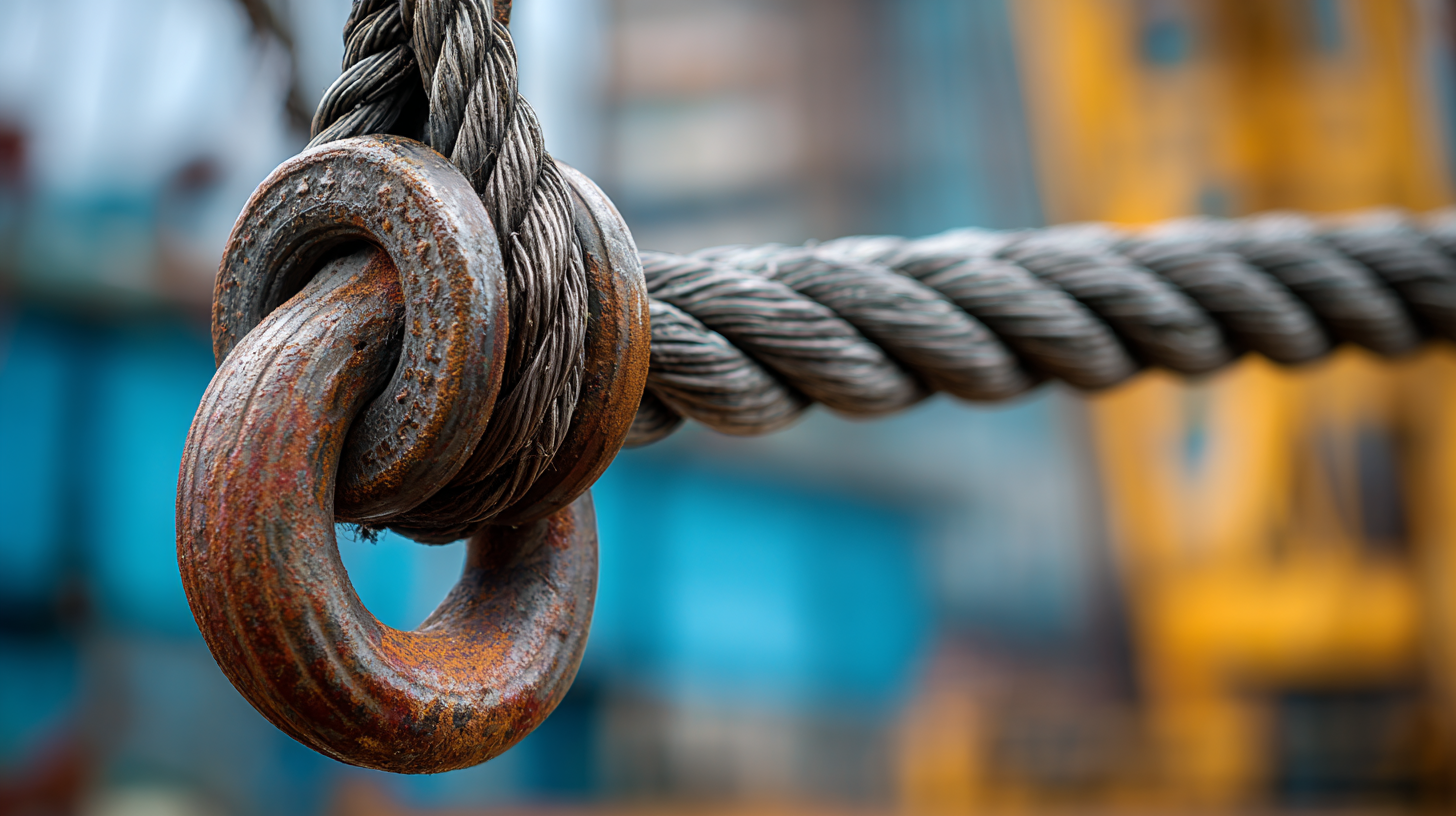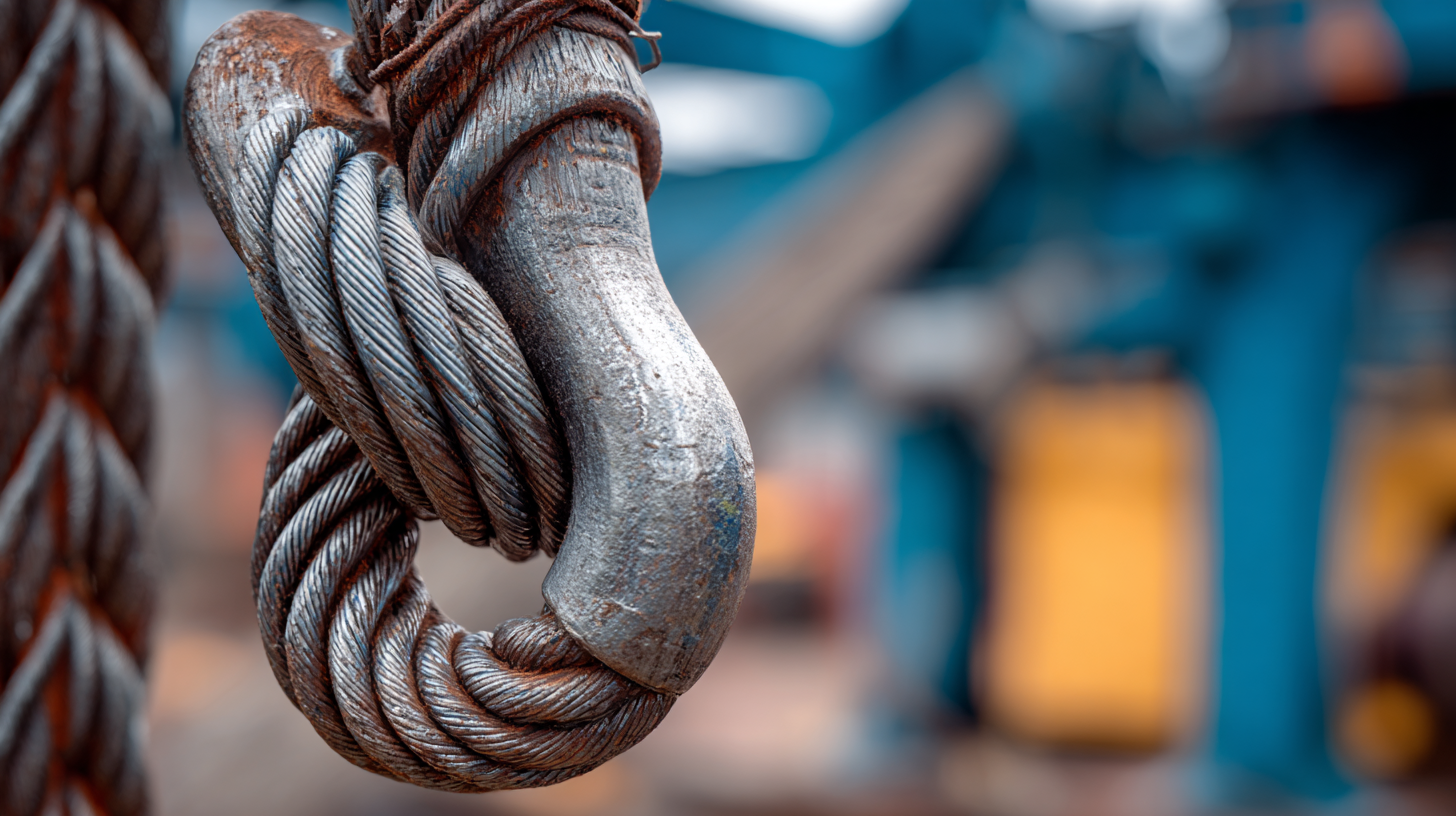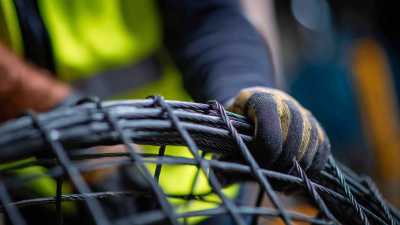In industrial applications, the significance of Wire Rope Swivel Hooks cannot be overstated. These essential components are designed to facilitate movement and load handling in various sectors, including construction, shipping, and manufacturing. According to a report by the International Organization for Standardization (ISO), the global market for lifting equipment is projected to reach $38 billion by 2025, and the demand for innovative and reliable accessories like Wire Rope Swivel Hooks is anticipated to drive this growth. Their unique design allows for 360-degree rotation, preventing twisting of ropes and cables, thus enhancing safety and operational efficiency. Furthermore, the ability to easily connect and disconnect loads makes them invaluable in applications where time and safety are of the essence. As industries continue to prioritize efficiency and safety standards, the role of Wire Rope Swivel Hooks will remain crucial in ensuring effective load management.

In industrial applications where load management is paramount, wire rope swivel hooks play a critical role in enhancing operational efficiency. These hooks allow for 360-degree rotation, which significantly reduces rigging and handling time. According to a report by the Occupational Safety and Health Administration (OSHA), proper load management techniques, which include the use of swivel hooks, can improve productivity by up to 25%. This capability not only facilitates smoother operation during lifting and maneuvering but also minimizes the risk of load slippage, leading to safer workplaces.
Moreover, the versatility of wire rope swivel hooks makes them indispensable in various industries such as construction, shipping, and manufacturing. The use of swivel hooks can reduce wear and tear on wire ropes, extending their lifespan by up to 50%, as noted in a study by the National Association of Manufacturers (NAM). With decreased replacement costs and improved safety standards, integrating swivel hooks in load management processes is a strategic move for businesses aiming for both efficiency and cost-effectiveness. The ability to adapt to dynamic load movements enables operators to optimize workflows and maintain a higher level of safety and efficiency in their operations.
This bar chart illustrates the efficiency improvements in load management across various industries using wire rope swivel hooks. The data reflects the percentage increase in load handling efficiency when utilizing these specialized hooks.
Wire rope swivel hooks play a crucial role in various industrial applications, offering versatility and safety in load handling. Ensuring safety when using these hooks is paramount, as improper use can lead to accidents and injuries. According to the Occupational Safety and Health Administration (OSHA), nearly 50% of workplace injuries in the construction and manufacturing sectors are related to improper lifting and handling equipment. Hence, understanding how to safely use swivel hooks is essential for maintenance and operational personnel.

One key safety consideration is the rated load capacity of the wire rope swivel hook. Operators must ensure that the hook is not overloaded; the safety factor is typically between 4:1 to 6:1, meaning the hook should only be used to lift loads significantly less than its maximum capacity. A study by the National Institute for Occupational Safety and Health (NIOSH) revealed that equipment failure due to overloading is a leading cause of accidents. Regular inspection and maintenance of swivel hooks, including checking for signs of wear or corrosion, are also important actions to mitigate risks. Furthermore, ensuring that hooks are properly positioned to allow for the natural swivel motion can prevent hazardous twisting and additional strain on both the hook and the wire rope.
Swivel hooks have become essential components in various rigging solutions due to their ability to enhance operational flexibility. Unlike standard hooks, swivel hooks can rotate 360 degrees, allowing for seamless movement and repositioning of loads. This feature minimizes the risk of tangling and damage to both the load and equipment, leading to safer workplace environments and increased efficiency in heavy lifting tasks. Industries ranging from construction to shipping have recognized the significant advantages that swivel hooks bring in terms of adjusting to different angles and directions during lifting.
**Tip:** When selecting swivel hooks, consider the load capacity and working environment. Ensure that the chosen hooks are compatible with your rigging system and withstand the specific conditions they will face, such as extreme weather or corrosive substances.
Additionally, the use of swivel hooks can reduce the time spent on rigging setups, as they allow for quick adjustments without the need for extensive reconfiguration. This agility not only enhances workflow but also aids in minimizing downtime during operations. Implementing swivel hooks into your lifting strategy can lead to improved productivity and overall project timelines.
**Tip:** Regular maintenance of swivel hooks is crucial. Inspect them frequently for wear, corrosion, or any signs of damage to ensure safe and efficient operations.
| Aspect | Description | Advantages | Applications |
|---|---|---|---|
| Design | Allows rotation of the load to prevent tangling and twisting. | Increases safety by reducing stress on the load. | Heavy lifting, construction, and rigging. |
| Material | Typically made from steel or alloy for superior strength. | Durability and resistance to wear and corrosion. | Marine applications, industrial lifting. |
| Load Capacity | Varies widely, typically ranging from 1 to 50 tons. | Flexibility in handling various load sizes. | Shipping, machinery installation. |
| Operational Flexibility | Allows for quick adjustments in load direction. | Improves overall efficiency of lifting operations. | Warehouse operations, rigging systems. |
| Safety Features | Equipped with safety latches and locking mechanisms. | Minimizes risk of accidental load release. | Construction sites, offshore drilling. |
The selection of wire rope swivel hooks is heavily influenced by various industry standards and regulations, which ensure safety and efficiency in industrial applications. Organizations such as the American National Standards Institute (ANSI) and the Occupational Safety and Health Administration (OSHA) establish guidelines that define the performance requirements for these essential components. Compliance with these regulations not only helps in maintaining safety protocols but also ensures that the hooks can handle the specific loads and conditions they will encounter in different industrial environments.

Moreover, certifications such as the ISO standards provide a framework for evaluating the quality and reliability of wire rope swivel hooks. These standards typically cover aspects like material properties, load capacities, and dimensional tolerances. When selecting a swivel hook, it's crucial for operators and procurement professionals to verify that the products meet or exceed these industrial benchmarks. This adherence to established standards not only minimizes the risk of equipment failure but also safeguards workers from potential hazards associated with improper lifting operations. By prioritizing standards and regulations, industries can optimize their operations while ensuring the highest levels of safety.
Wire rope swivel hooks are essential components in industrial operations, providing flexibility and safety during lifting tasks. To ensure their longevity and optimal performance, regular maintenance is crucial. One of the primary tips is to inspect the hooks frequently for signs of wear, such as cracks, deformations, or corrosion. Any visible damage could compromise their structural integrity, making timely replacement necessary to avoid accidents.
Another important maintenance practice is to lubricate the swivel mechanism regularly. Proper lubrication minimizes friction and wear, allowing the hook to rotate freely under load. Additionally, cleaning the hooks after exposure to dust, debris, or harsh environmental conditions is vital. Accumulated grime can lead to premature wear and hinder the functioning of the swivel feature. Following these maintenance guidelines not only extends the lifespan of wire rope swivel hooks but also enhances the overall safety and efficiency of industrial operations.






